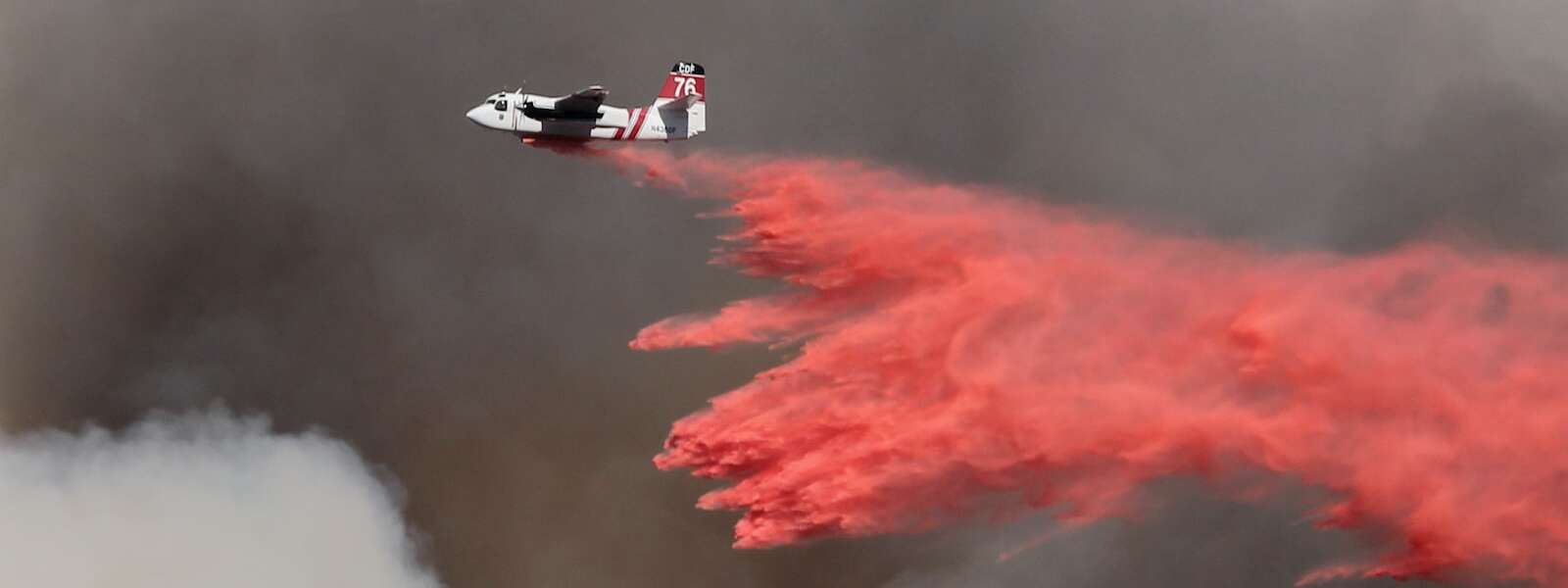In the first moments after a wildfire sparks, the shape and speed of the response are critical.
Mobilizing aircraft is one of the first steps and new research from the University of Guelph is evaluating previous responses to better prepare for wildfires in British Columbia.

Working with Natural Resources Canada, Dr. Khurram Nadeem, a statistics professor in the College of Engineering and Physical Sciences, looked at historical data from the B.C. Wildfire Service (BCWFS) to develop new modelling for wildfire managers when making decisions about aircraft use in initial attacks (the first response to an active wildfire).
The findings were recently published in the International Journal of Wildland Fire.
British Columbia sees an average of 1,758 wildfires annually, according to data amassed between 1986 and 2014 analyzing more than 70,000 wildfires.
Initial attack aircraft were used in more than 40 per cent of those fires and comprise 20 per cent of the province’s annual fire suppression budget, which ranges from $20 million to $120 million. In total, Canada spends $500 million annually on wildfire aviation.
Developing predictive models will help wildfire managers best position the right number of aircraft in strategic geographical locations, save financial resources and lower the risk for humans and ecosystems in danger of a rapidly moving wildfire.
Canada, climate change and the danger of wildfires
This study focuses on B.C. only because it was the province with the most historical data. The models developed can be applied across Canada to any region that experiences wildfires, Nadeem said.
As climate change exacerbates the number of wildfires each year, Nadeem said, this research is critical. “It’s a stark warning for global warming,” he said. “We developed this methodology as a set of quantitative tools to help managers.”
Using the wildfire data, researchers also looked at 250,000 flights recorded by the BCWFS Aircraft Management System, weighing variables such as flight dates, aircraft models, registration numbers, hours of use and number of legs flown, as well as the Fire Weather Index (FWI).
“The model has the novel aspect that it quantifies what the response was in the past and in light of that, it predicts whether you are going to deploy an aircraft or not,” Nadeem explained.
Digging into the data to analyze fire management decisions over three decades was like “detective work,” said Nadeem. “Modelling in a quantitative fashion is to learn to reduce waste and that in turn improves your overall system, including your response time, and reduces risk.”
A new model to avoid tragedies like the Lytton, B.C. wildfire
Seasoned wildfire managers position aircraft where they are likely to be most needed, and typically make successful decisions, Nadeem said. That can mean deploying initial attack aircraft to a certain location a few days in advance, depending on how fire weather conditions could be unfolding.
Strategically placing aircraft allows for a faster physical response to a wildfire, letting managers then focus on decisions about personnel, dispersing fire retardant and other responsibilities. “You can make quicker decisions once you have the aircraft deployed nearby,” Nadeem said, which can help avoid tragedies as in Lytton, B.C., a village that burned to the ground in a matter of hours in June 2021.
Armed with this research, wildfire managers can now base a response from a hybrid perspective; this is human-machine-learning integration, Nadeem said. “It’s statistical learning and human decision-making going hand-in-hand,” he explained.
“That’s the hybrid approach that I think would really reduce the risk and hopefully prevent such incidents like the one that happened in Lytton.”
Contact:
Dr. Khurram Nadeem
nadeemk@uoguelph.ca
